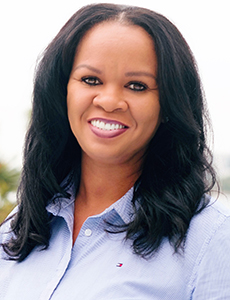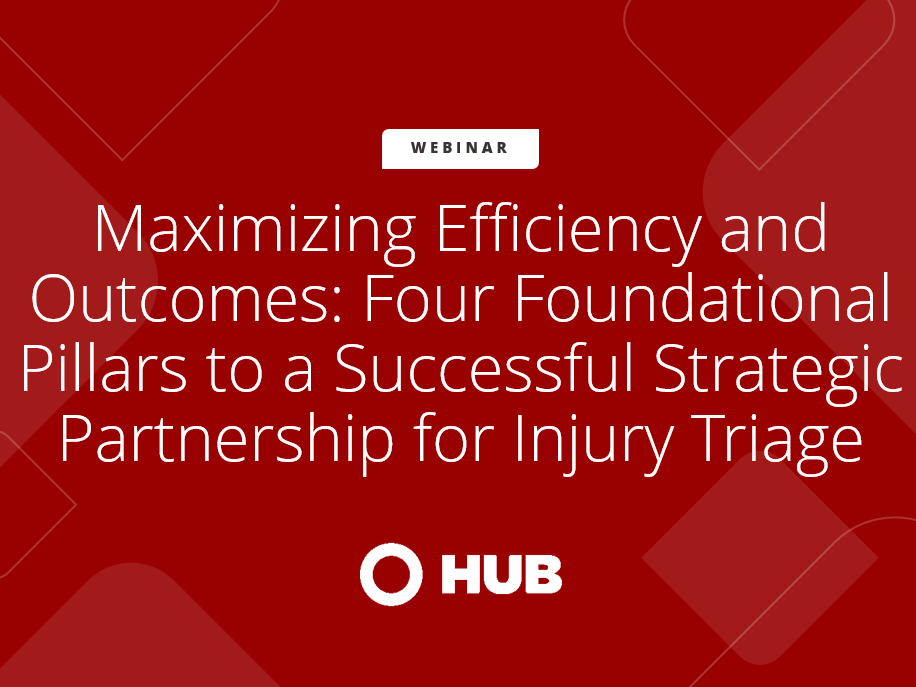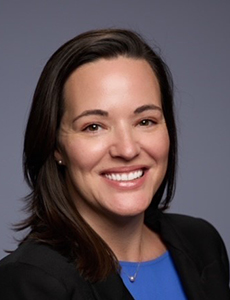Sponsored Content by One Call
Improving Customer Experience: How This Leader in Workers’ Comp Is Placing the Worker’s Journey Front and Center

In the realm of workers’ compensation, a worker’s journey begins the moment they are injured.
From there, they go through the process of doctor visits, nurse case manager calls, adjuster check-ins, physical therapy and more.
For many injured workers, the workers’ compensation system is a brand new ball game to which they do not yet know the rules. It can be frightening and confusing, especially when they are also facing the reality they will be out of work for an unknown period of time.
That is why there needs to be an emphasis on each injured worker’s experience.
“As part of our dedication to ensuring the right care is provided at the right time, the workers’ compensation industry has to stop looking at claims as single transactions and view the entire claim as the worker’s journey,” said Aquanda Lewis, senior vice president of customer experience at One Call.
Each worker journey, or customer journey, requires more than the presence of good customer service.
“While customer service is important, because it provides a service at a point in time, a bigger focus must be placed on the end-to-end journey of that worker,” said Lewis.
“That’s their experience.”
Defining Customer Experience

Aquanda Lewis, Senior Vice President of Customer Experience, One Call
Customer experience starts the moment a worker or even their employer begins working with the workers’ comp team.
Workers’ compensation professionals are focused on the customer’s journey from day one. They are monitoring doctor appointments, answering questions, keeping employer and employee informed and more. They are tasked with connecting all aspects of that customer’s journey throughout the claim in order to provide a customer experience that is positive and produces the best possible outcome.
As a third party, the workers’ comp team is tasked with making sure its organization is connecting all aspects of the customer’s journey throughout its business in order to provide a customer experience that is positive and produces the best outcome possible.
“By incorporating customer experience into the process, we’re ensuring the best potential outcome for that injured worker,” Lewis explained.
“We’re not just focusing on getting an injured worker to a scheduled appointment; we’re focused on every stage of the engagement cycle. Did they get there on time? Did they receive the best quality care we could provide?”
One Call is leading the charge with its customer experience approach and has already developed a methodology around this value. For this workers’ compensation service leader, customer experience has enabled its organization to think differently about its workers’ comp approach overall.
“We’ve learned that it is extremely important that we deploy the right tools and methodologies in order to drive improvements. You must be willing to operate differently in order to optimize your results and not be comfortable with the status quo,” said Lewis.
This customer experience approach, therefore, is something One Call believes the entire industry can incorporate.
“We’re all in it for the same reason,” said Lewis.
“To get injured workers the best care possible. They are both the goal and at the center of everything we do.”
Placing Customer Experience at the Heart of Every Interaction
At One Call, the goal is to embed customer experience in every aspect of the organization.
“It is important to ensure every touchpoint and interaction throughout a customer’s journey delivers an exceptional experience,” said Lewis.
That started with the team.
At One Call, there are close to 50 dedicated team members who are focusing in on customer experience.
“These team members are reviewing and analyzing the tools we have in place to support each injured worker,” explained Lewis. “They’re reviewing the measurements and analytics we collect on injured worker outcomes. They’re thinking about our relationships with each customer. They’re thinking about solutions.”
She continued, “Over the past six months, the team has deployed more stringent processes around customer experience. We’ve learned a lot from that.”
The biggest takeaway for One Call has been the need to ensure communication from the moment an injured worker’s claim entered their services to the close of the claim was effective and clear.
She added that for other organizations looking to include this approach, they are likely to gain several key insights of their own, including:
- Understand the gaps in a process, product or service and make the necessary improvements to improve the journey;
- Influence change through collaboration and coordination across functions to drive a consistent vision, approach and message for the customers;
- Understand what experiences customers really need and want, where the best opportunities for improvement reside, and how to measure success;
- Envision the necessary changes in technology, products and processes creating roadmaps, milestones, deliverables and responsibilities for implementing changes; and
- Create and utilize proactive measurements to assess internal results and customer perceptions/behavior.
Ultimately, Lewis added, organizations will drive the best outcomes for their injured workers.
A Commitment to Constant Improvement
One Call’s team isn’t stopping anytime soon, either. They are constantly looking for new ways to improve their customer experience in order to drive even better outcomes.
“We’re not just focused on a one-off solution,” said Lewis. “This is about how do we influence every aspect of the organization when it comes to customer experience. How do we continue to put the injured worker’s needs front and center.”
One way was to become Lean Six Sigma certified. The team currently has eight blue belts, eight green belts and one black belt on staff.
Lean Six Sigma focuses in on the processes of a business and ensures that the organization can lean out any gaps in those processes, making each as efficient as possible. Those who are certified in Lean Six Sigma at One Call are constantly looking for ways to improve upon an already-successful customer experience approach.
“We have the background and the knowledge and the resources to think differently about our customer experience,” said Lewis.
“We’re using this to improve methodologies across the board, from operations to sales to how we manage our network of providers. And each provides us with new insight on how to improve customer experience,” she said.
To learn more, visit https://onecallcm.com/.
This article was produced by the R&I Brand Studio, a unit of the advertising department of Risk & Insurance, in collaboration with One Call. The editorial staff of Risk & Insurance had no role in its preparation.











